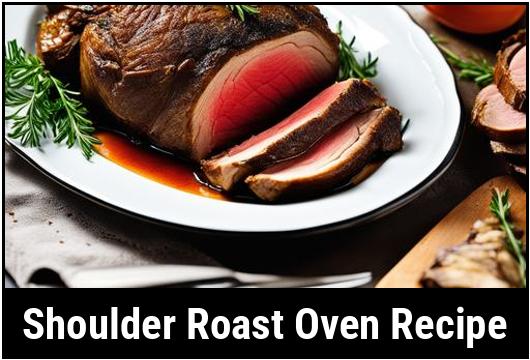
Shoulder Roast Oven Recipe: A Comprehensive Guide
In this comprehensive guide, we will delve into the delightful world of cooking a succulent shoulder roast in the oven. Shoulder roast, also known as chuck roast, is a tender and flavorful cut from the shoulder region of the cow. It is perfect for slow cooking methods like roasting, making it an excellent choice for a delicious and satisfying meal. This article will cover various aspects, including food science, culinary details, selection, cleaning, preparation, tips, variations, doneness checks, and, of course, a mouthwatering shoulder roast oven recipe.
Food Science Behind Shoulder Roast
Understanding the food science behind shoulder roast can greatly enhance the cooking process. The shoulder area contains a significant amount of connective tissue, also known as collagen. Collagen breaks down during cooking, transforming into gelatin, which in turn adds richness and depth to the flavor while improving the tenderness of the meat. Slow cooking methods, such as roasting, help break down the collagen and convert it into delicious gelatin.
Selection
When selecting a shoulder roast, it is crucial to choose a well-marbled cut with a good amount of fat running through it. The fat adds flavor and moisture to the roast during cooking. Look for a roast that is deep red in color, indicating freshness. The meat should be firm to the touch and have a smooth texture.
Cleaning and Preparation
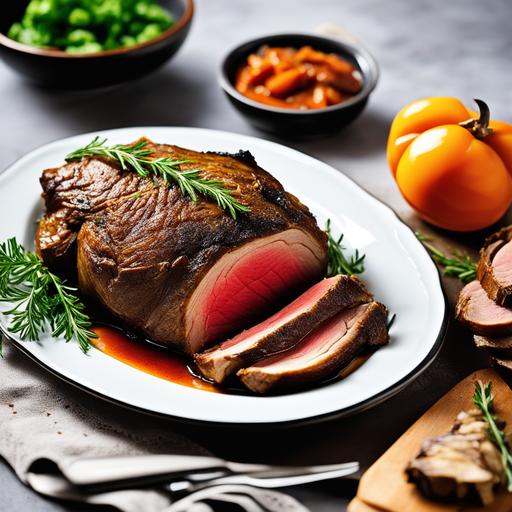
Before cooking, it is essential to clean the shoulder roast thoroughly. Rinse it under cold water and pat dry with paper towels. Trimming excess fat can be done, but leaving a thin layer of fat on the roast will enhance the flavor and tenderness.
Tips for Perfect Shoulder Roast
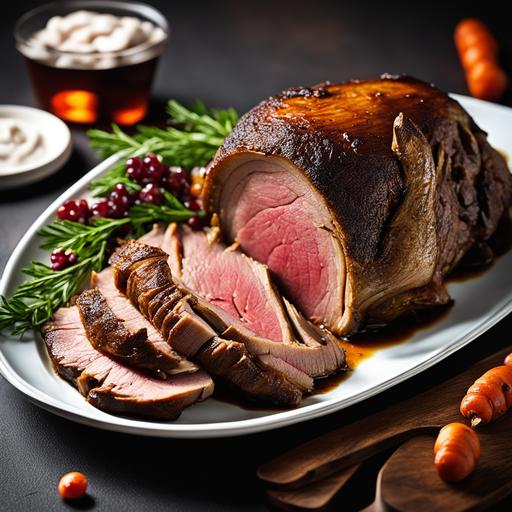
To achieve a perfectly cooked, tender, and flavorful shoulder roast, consider these helpful tips:
-
Marinating: Marinating the roast can infuse additional flavors and help tenderize the meat. A simple marinade with herbs, garlic, olive oil, and a touch of acidity from lemon juice or vinegar can work wonders.
-
Brining: Brining the shoulder roast in a saltwater solution can help retain moisture and improve the flavor profile. Allow the roast to soak in the brine for several hours or overnight for optimum results.
-
Seasoning: Generously season the roast with your favorite herbs and spices. Consider a blend of rosemary, thyme, garlic powder, onion powder, salt, and black pepper for a classic roast flavor.
-
Slow Cooking: Shoulder roast requires slow cooking at a low temperature to ensure tenderness and to allow the collagen to break down fully. Set your oven to around 275°F (135°C) for optimal results.
-
Basting: Basting the roast with its own juices or a flavorful cooking liquid throughout the cooking process will help keep the meat moist and tender.
Variations
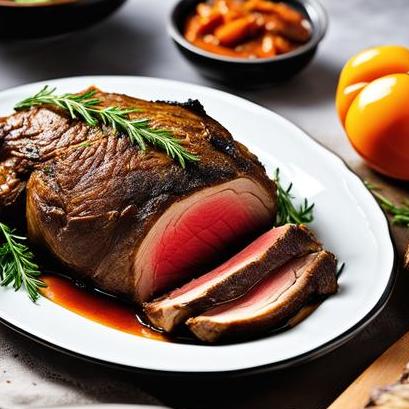
Shoulder roast is incredibly versatile, allowing for various delicious variations. Here are a few ideas to experiment with:
1. Smoky Barbecue Shoulder Roast
Inject a delightful smoky flavor into your shoulder roast by adding a homemade barbecue sauce during cooking. Mix together ketchup, brown sugar, Worcestershire sauce, smoked paprika, garlic powder, and a dash of liquid smoke. Baste the roast with this flavorful sauce as it slow cooks in the oven.
2. Mediterranean Herb Crusted Shoulder Roast
Bring a taste of the Mediterranean to your shoulder roast by creating a vibrant herb crust. Combine freshly chopped herbs like oregano, thyme, rosemary, and parsley with minced garlic, lemon zest, and olive oil. Rub this mixture all over the roast before placing it into the oven.
3. Asian-inspired Glazed Shoulder Roast
For an Asian twist, prepare a sweet and savory glaze. Whisk together soy sauce, honey, ginger, garlic, sesame oil, and a touch of chili flakes. Brush the glaze onto the roast during cooking, building layers of flavors.
Doneness Checks
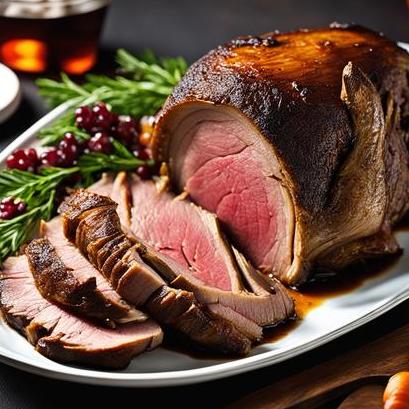
Determining the doneness of the shoulder roast is crucial to ensure a perfectly cooked meal. Here are some methods to check for doneness:
-
Internal Temperature: Using a meat thermometer, insert it into the thickest part of the roast, avoiding any bones. The desired internal temperature for a medium-rare roast is around 135°F (57°C) and around 145°F (63°C) for medium doneness.
-
Probe Tender: Another method is the "probe tender" test. Insert a fork or skewer into the meat and twist gently. If it goes in and comes out easily, the roast is tender and cooked.
Shoulder Roast Oven Recipe
Now, let’s dive into a delectable shoulder roast oven recipe that will leave your taste buds dancing with joy.
Ingredients:
-
4 pounds (1.8 kg) shoulder roast
-
2 tablespoons olive oil
-
4 cloves garlic, minced
-
2 teaspoons dried rosemary
-
2 teaspoons dried thyme
-
1 teaspoon salt
-
1 teaspoon black pepper
-
2 cups beef broth or red wine
Instructions:
-
Preheat your oven to 275°F (135°C).
-
In a small bowl, combine the minced garlic, dried rosemary, dried thyme, salt, and black pepper.
-
Rub the olive oil all over the shoulder roast, ensuring it is evenly coated.
-
Sprinkle the herb and spice mixture over the entire roast, gently massaging it into the meat.
-
Place the roast in a large oven-safe pan or Dutch oven. Pour the beef broth or red wine into the pan, surrounding the roast.
-
Cover the pan tightly with a lid or aluminum foil.
-
Place the pan in the preheated oven and allow the roast to cook slowly for approximately 4 to 5 hours. Baste the roast every hour with its own juices or additional broth/wine.
-
After the cooking time has elapsed, remove the pan from the oven and allow the roast to rest, covered, for 10 to 15 minutes.
-
Carve the shoulder roast against the grain into thick slices, and serve it with the savory pan juices.
Conclusion
Cooking a shoulder roast in the oven can take your culinary skills to new heights. By understanding the food science, following proper selection, cleaning, and preparation techniques, perfecting the cooking process, and exploring various flavors and variations, you can create an outstanding shoulder roast that will impress both family and friends. Use this comprehensive guide and the provided recipe as a launching point to embark on your shoulder roast cooking adventure. Let your taste buds rejoice in the succulent, tender, and flavorful masterpiece you create. Happy cooking!
FAQS On Shoulder Roast Oven Recipe
What Is A Shoulder Roast?
A shoulder roast, also known as a pork shoulder or pork butt, is a flavorful cut of meat that is taken from the upper portion of the pig’s front leg. It is a versatile cut that can be cooked in various ways, including oven roasting, to result in tender and juicy meat.
How Do I Choose A Good Shoulder Roast?
When selecting a shoulder roast, it is best to choose one that has marbling, which refers to streaks of fat running through the meat. Marbling helps keep the meat moist and adds flavor during the cooking process. Look for a roast that has a nice pinkish color, rather than a pale or grayish tone, as this indicates freshness.
How Do I Prepare A Shoulder Roast For Oven Cooking?
To prepare a shoulder roast for oven cooking, start by trimming off any excess fat on the surface of the meat, leaving behind a thin layer for flavor and moisture. You can also make incisions or small cuts into the roast and insert slivers of garlic or herbs to enhance the flavors. Season the roast generously with salt, pepper, and any other desired spices or herbs.
What Is The Recommended Cooking Temperature And Time For A Shoulder Roast In The Oven?
It is recommended to cook a shoulder roast in the oven at a temperature of around 325°F (163°C). The cooking time will vary depending on the size and thickness of the roast. As a general guideline, plan for approximately 25 minutes of cooking time per pound of meat. Using a meat thermometer inserted into the thickest part of the roast, ensure the internal temperature reaches 145°F (63°C) for medium-rare or 160°F (71°C) for medium doneness.
Should I Cover The Shoulder Roast While Cooking In The Oven?
It is generally advisable to cover the shoulder roast with aluminum foil or a roasting pan lid for the first two-thirds of the cooking time. This helps to retain moisture and prevent the meat from drying out. During the last portion of the cooking time, remove the foil or lid to allow the exterior of the roast to brown and develop a delicious crust.


